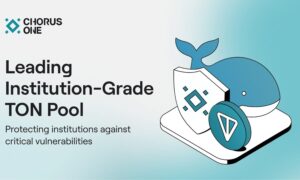In 2021, the “smart money” from leading institutions and asset managers has been piling into the cryptocurrency realm. According to a Grayscale report, in 2020 alone 87% of Bitcoin Investments came from Institutional Investors, and you can bet that number is growing in 2021, with the likes of Bank of America, JP Morgan and Goldman Sachs understanding that crypto is the perfect way to diversify a portfolio.
Cryptocurrency products and funds have recorded week after week of inflows, as institutional investors are warming up to the more positive statements coming from the central bankers. This in turn seems to have a positive impact on the price of the leading cryptocurrencies, so it’s a win win.
But it’s not just the institutional funds that are now being funneled into the cryptosphere; indeed a human talent pool of former bankers have started to ‘see the light’ and have pivoted into working with crypto and the blockchain.
James Taylor from Unizen is a prime example. Over the course of his illustrious career, he has courted the major names in Traditional Banking, from Deutsche to JPMorgan, and has even been described as a leading light in BNY Mellon. We spoke to him to understand the appeal of moving away from TradFi into DeFi.
Hi James, after so many years in the banking realm, it seems like a jump to the other side. What led you to change course into crypto?
I was interested in Unizen as soon as I found out about it and was looking for ways to participate in the project. Since I’ve been in finance for years, the idea of merging CeFi and DeFi made a lot of sense to me. Traditional banking offers a lot of its unique advantages, but it’s very specialized – whereas in my current position I work in many directions. It’s a very fulfilling transition, and because we work as CeDeFi (combining centralized and decentralized finance) both my technical and financial experience is useful.
What does your role look like at Unizen?
I’m Chief Business Development Officer, and since I come from traditional finance, my role is to introduce institutions and financial experts to crypto assets and to Unizen in particular. The typical areas of concern are compliance, liquidity, investor protection, asset volatility. I help develop ways to solve these issues and communicate them to the CeFi community. A lot of things have never been done before, so there’s a lot of information to learn and questions to ask – so it’s fun.
Unizen is described as a “smart exchange”, what does that mean?
Unizen combines the functionality of CEX and DEX with centralized and decentralized trading modules. Both ways have their benefits. For instance, CEX is more intuitive and provides higher protection – assets are verified and listed by the official team, there’s an active support team, etc. However, DEX protects privacy and anonymity, allows trading more assets, and is a good way to enter emerging projects early. Unizen provides both: a user can switch between modules, track full history, access all assets from one platform.
Combining CEX and DEX at one platform seems like an ambitious endeavor, and it is. Such an exchange requires deep liquidity, strong compliance (which is a grey area both for many existing platforms), secure blockchain, intuitive interface, etc. A lot is achieved with cooperation – we share liquidity with Binance and Sifchain, use LunarCrush’s social indicators to verify assets – but a lot of features are custom-built and will be the first in the game.
What does the cryptoverse and Unizen specifically offer investors that ‘TradFi’ does not?
Crypto attracts investors with its high returns, versatility, and global availability. One of the reasons why Bitcoin and now other assets succeed is because they are available to people everywhere. It’s an alternative approach to finance, so even if traditional finance enters a rough stage, crypto assets will remain valuable, if not increasingly so.
Another benefit is the innovation aspect. Many great projects are only just emerging, and individuals and institutional investors have a chance to enter very early on. DeFi has grown a lot, but it’s still at the early stage. Apple alone has a much higher market cap than the entire DeFi – so there’s still quite a way to go. Now, many established companies are considering crypto assets and blockchain functionality, and new types of assets (take NFTs) will keep emerging.
Of course, crypto has not solved many of its problems yet. The main one is compliance – regulators do not have a framework yet, and when they do, it’s not clear how it’s going to affect existing projects. Then we have investor protection and safety – like loss of crypto assets not being covered by the government or purely speculative currencies. Also, even established projects occasionally face tech security problems (hacks, data breaches). At Unizen, we are very openly talking about these issues – there’s an ongoing conversation between DeFi and CeFi experts that will hopefully lead to resolution.
What percentage allocation of an investing portfolio should be made up of crypto?
The exact percentage depends on the investor’s technical and market understanding of crypto assets. If you are new to the field, start slow and with proven assets. You need to assess risks like compliance, security, volatility of the asset. For experienced investors, the dynamic nature of crypto asset value is a benefit: it’s a part of the reason why it’s indeed possible to achieve legitimate high yields quickly. However, for institutional participants and new investors, volatility is a risk.
So, I would advise against putting the entire budget in crypto and starting slowly instead while prioritizing education.
Where do you see the future of crypto going for investors?
I think CeDeFi is the future for crypto investors, both on retail and institutional levels. When regulations will become clearer (and they inevitably will because the market has already attracted enough attention from legislators), institutions will have fewer concerns about crypto legitimacy. Rather than DeFi being an alternative to centralized finance, the two will merge and co-exist.
The terms of this collaboration are very important. Institutional participation should enhance the benefits of decentralization, not inhibit them. This is why the initiative should come from the decentralized community. Instead of waiting for banks to offer terms and introduce their own centralized platforms, DeFi teams can offer truly decentralized solutions and negotiate with the communities’ interests in mind. Hopefully, we are achieving this at Unizen (and help other projects with the same thing with ZenX Labs incubator).
What is in the pipeline for Unizen?
On the technical side, we are nearing the finish line for Dynamic Multi-Asset Staking (DMAS) release. Basically, it’s an innovation of Proof-of-Stake that allows getting multiple assets as rewards for staking native currency. So, it’s an important step towards portfolio diversification that interests both retail and institutional investors. All assets are carefully vetted by the team – the participant projects are incubated and accelerated by ZenX Labs.
The next milestone is the release of Unizen exchange. The team will release CEX and DEX modules, along with native Unizen logic. That will enable safe interactions with crypto assets with advantages from both centralized and decentralized ways.
On the business development side, we are working on bringing together CeFi and DeFi experts. The team is discussing CeDeFi with impactful participants on both sides of the table, while the tech team makes things happen technically. Business and tech development should come together if the goal is to establish CeDeFi and build an exchange that would be smart for everyone.
Bottom Line
Institutions are staking their claim to crypto and the blockchain, and that’s because they need to be always at the forefront of innovation in order to stay competitive. There’s a lot of interest around crypto, and a lot to be gained. For example, crypto custody is still a grey area, and the same goes for credit. But there have been decentralized solutions that took the initiative in addressing these needs, letting CeFi watch events unfold for a while.
Now institutions have accumulated enough theoretical knowledge and gathered capable teams to build their own solutions. The first-come-first-serve nature of innovation will drive them to be more proactive. Who will be the first to offer a well-rounded infrastructure for crypto? Who will be most efficient in cooperating with exchanges? Or a go-to provider for custody? A lot of institutions are considering these questions and the landscape is still evolving.

































